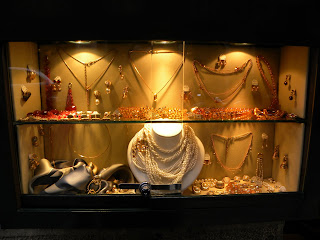The Sunday Skip: I had the wonderful honor of meeting Professor Riccardo Dalisi at his art studio last week. Accessible, jovial, and willing to talk openly about his life and his works, Professor Dalisi has had his art displayed in exhibits throughout Europe and America. His claim to fame is having re-created a slick new design of the Neapolitan Flip-Over Coffee Pot commissioned by the company Alessi, for which he won the 1981 Golden Compass, the premier industrial design award in Italy.
His ideas for the new rendition of the caffettiera napoletana arose from his workshops where he took the tin pot and, in the tradition of the pulcinella and Neapolitan theater movement opera buffa, he began to sodder faces, arms, and legs onto them:
Professor Dalisi grew up during the war years when often he had nothing more than potato peels to eat. But his father enjoyed the arts and encouraged him to study. Professor Dalisi received a degree in architecture and later became a tenured professor at the University of Naples Department of Architecture, his alma mater. While teaching, he began to establish workshops for children, in particular children who lived in impoverished areas of Naples. There, he encouraged them to create spontaneously using any materials at their disposal (known as tecnica povera). Soon, many of the children's works began to appear in exhibitions.
Influenced by the Spanish architect Gaudi, about whom he wrote and published a book, Professor Dalisi always adopts and absorbs international as well as Italian history and culture to develop his works. He has created masks from various metal materials, which are a play on the theater masks of Roman times. He also sculpts larger works, such as this Don Quixote:
His studio in the Vomero district brims with a cornucopia of artistic works. Visitors are welcome at Professor Dalisi's workshop along Rua Catalana in the heart of downtown Naples. His works can also be seen at inside the catacombs at The Church of Santa Maria della Sanita.
Here are some pictures of the workshop on Rua Catalana:



Grazie mille Professor Dalisi e tutti suoi cari amici-artisti!
Book Recommendations: La Caffettiera E Pulcinella by Riccardo Dalisi, Architettura D'Animazione by Riccardo Dalisi. (Many more books published by Professor Dalisi can be found at his workshop.)







































